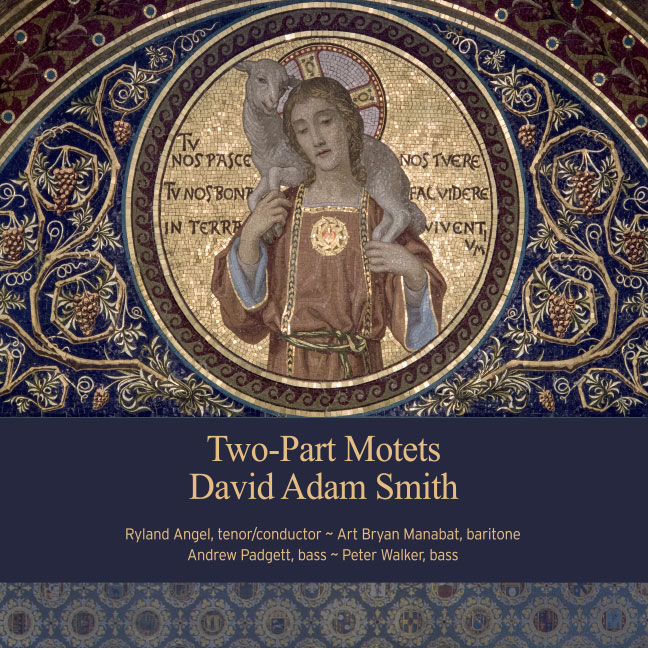The thirty-one Two-Part motets were originally written as “training wheels” for choirs who need to gain more confidence in singing polyphony and harmony, and to learn rhythmic control. Also, there has always been a shortage of short “fill-in” choral music for liturgical situations. For example, at communion, a choir will commonly sing a reasonably substantial work, and inevitably as they come the end, the choir director, looking over his shoulder, discovers that communion hasn’t finished. What to do, a) dash over to the organ and start improvising, b) search around for a hymn to sing, c) wait and do nothing, or d) reach for the Two-Part Motets, give a page number, and away we go. This last solution is certainly a more professional way to handle those last few minutes, while the congregation will sense that all is in order.
But wait! Two-Parts isn’t four-parts, and we certainly don’t want to leave out various choir members, especially dedicated volunteers coming from a fair distance. Well, that’s what this essay is about – finding creative ways to use two-parts with a three, or four-part choir.
To begin, let’s start with a couple simple solutions. Any motet with multiple verses can easily alternate between soprano/alto and, tenor/bass, i.e., “O Panis Dulcissime”, or “Te Joseph Celebrent” (perhaps the women chant, and the men singing the verses, or the other way around). Same goes for “A Solis ortus cardine”. “Verbum Bonum” can be a lot of fun by adding the harmony with either men or women singing the melody. Here’s an example with verses one, two, and three:
You probably noticed that several of the motets lend themselves to drones and organum which most scholas/choirs are familiar with. So, let’s dive into this medieval world and see what we can create for ourselves.
“Invocation” lends itself nicely to the men singing the drone while the sopranos and altos sing the motet.
Next, “Domine Iesu, clementissime” is not so much drone like, but is certainly in the medieval style. The original lower voice is now in the alto voice, while the treble is transposed into the bass. We can call it a vocal inversion. (It’s common to transpose the motets into a range suitable for your choir, especially with SATB requirements.)
Here’s “Domine Iesu, clementissime” again, this time harmonized for four-parts. The Sopranos has the original melody in their range, freeing the altos and tenors to the harmony as supplied in this example.
The motet “O gloriosa, Domina” is an obvious candidate for SATB arranging, with its second and forth verses harmonized in this example:
Our next example, “Si quis vult post me” demonstrates how a simple canon can be turned into a real tour de force of SATB singing. You will notice immediately that the sopranos and altos are singing an obbligato over the men’s canonic singing. It’s possible to repeat the piece with the sopranos and altos singing the cannon and the men singing the obbligato part.
Our last example is a harmonization of the ‘Amen’ which ends “O Creator Sancte Spiritus”. Because the two-part writing is avoided until the end, it would be allowable for the both the men and women to sing in unison an octave apart and take up their respective parts for the amen. Here’s the entire motet for SATB:
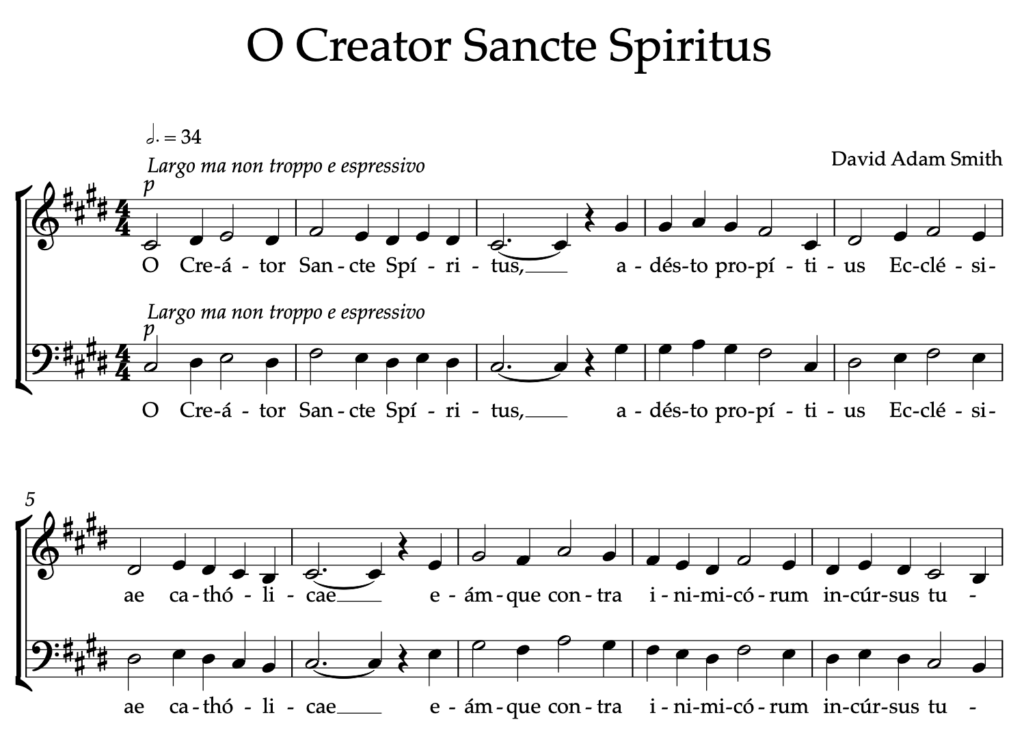
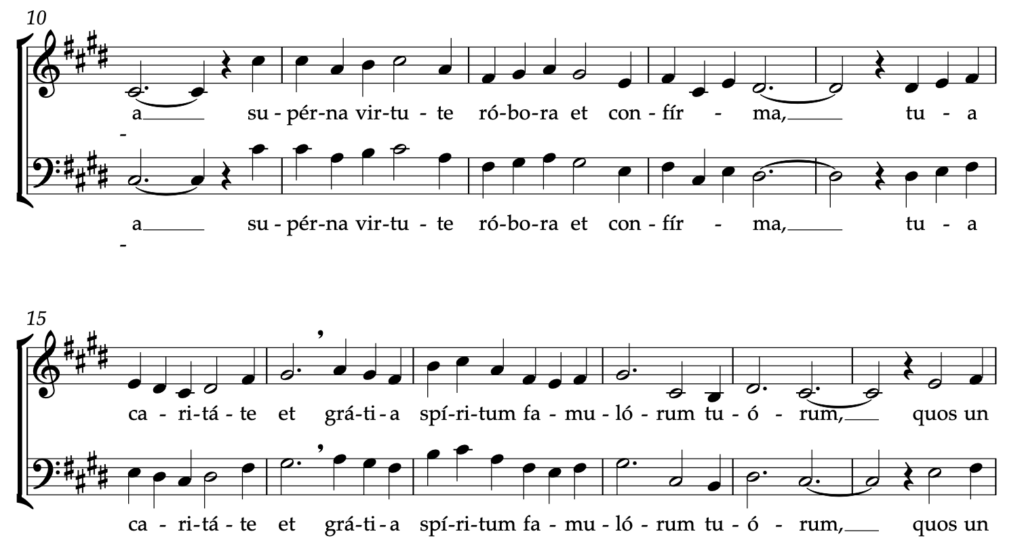
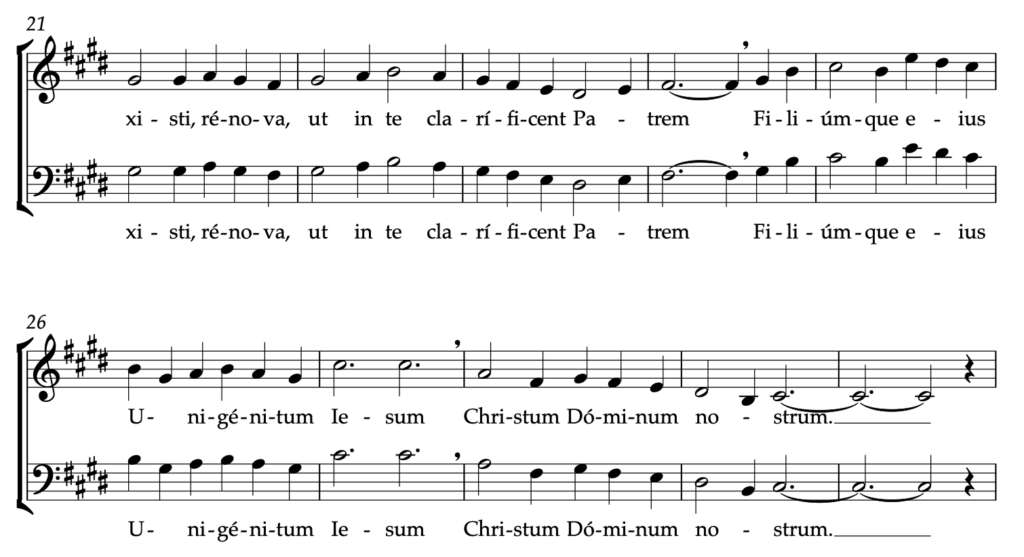
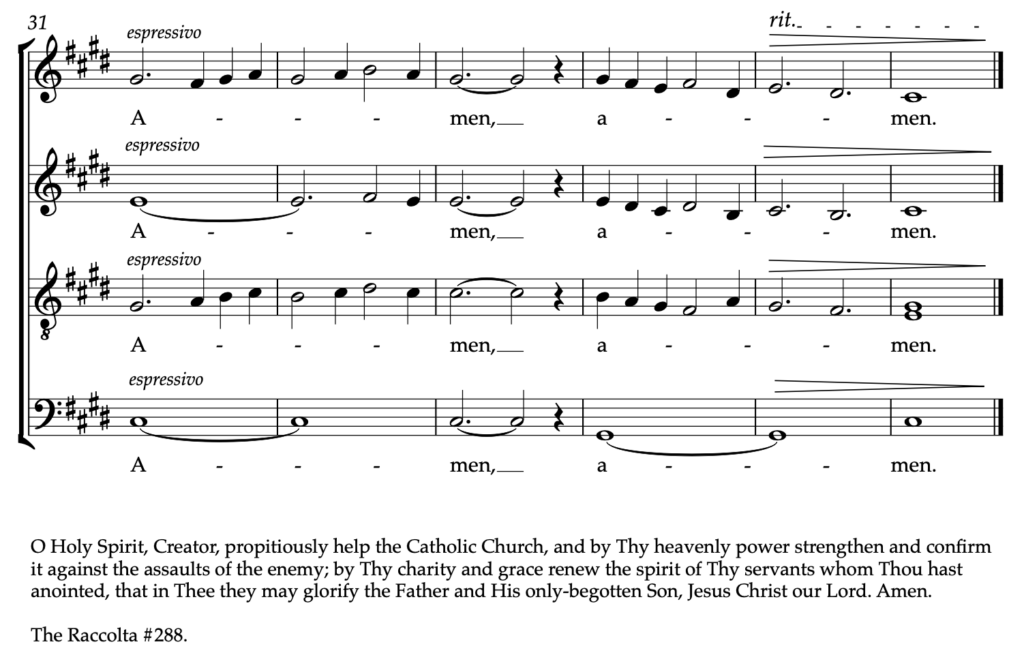
These few brief examples show how to use your own creative ideas when approaching the Two-Part Motets, as there are many opportunities to mold them into your local choral and liturgical requirements.
David Adam Smith
Copyright © 2025. See copyright notice below for details.
